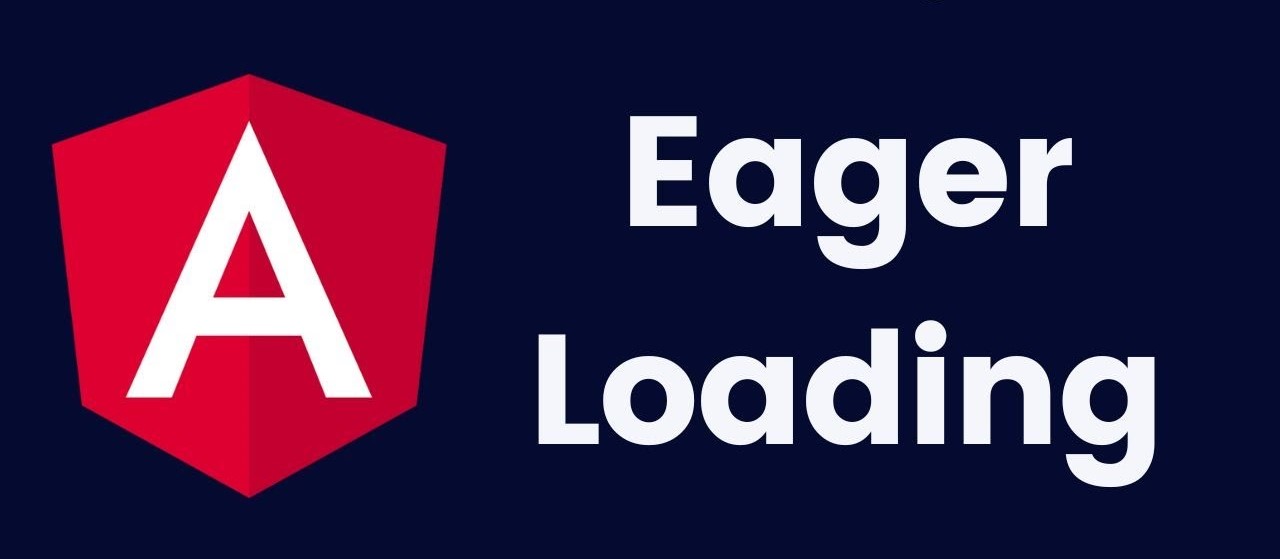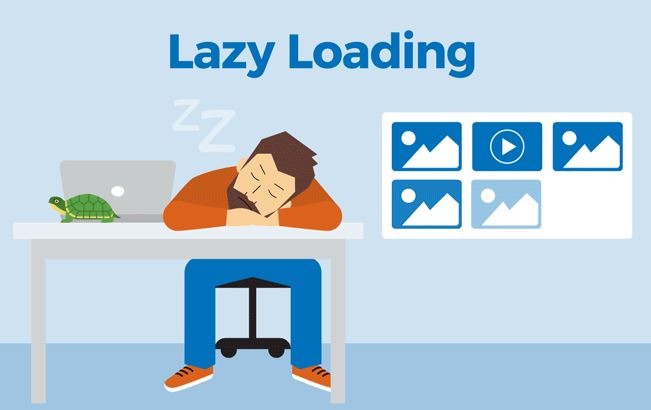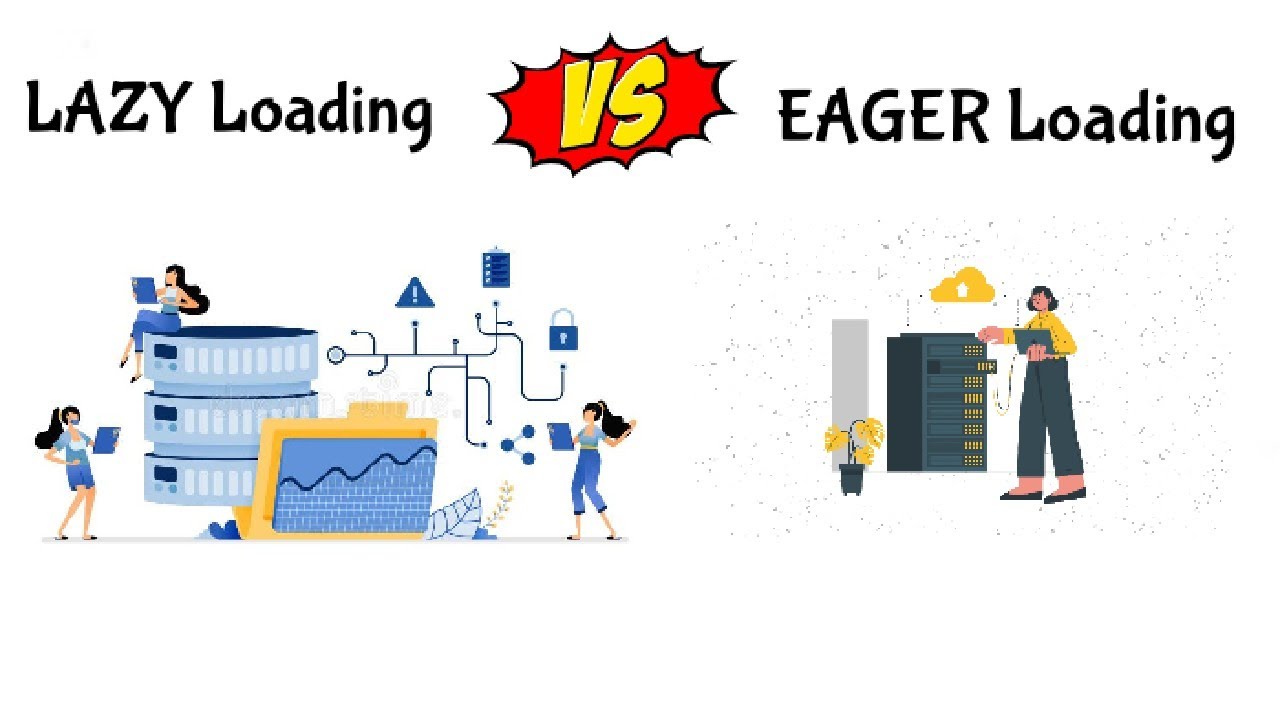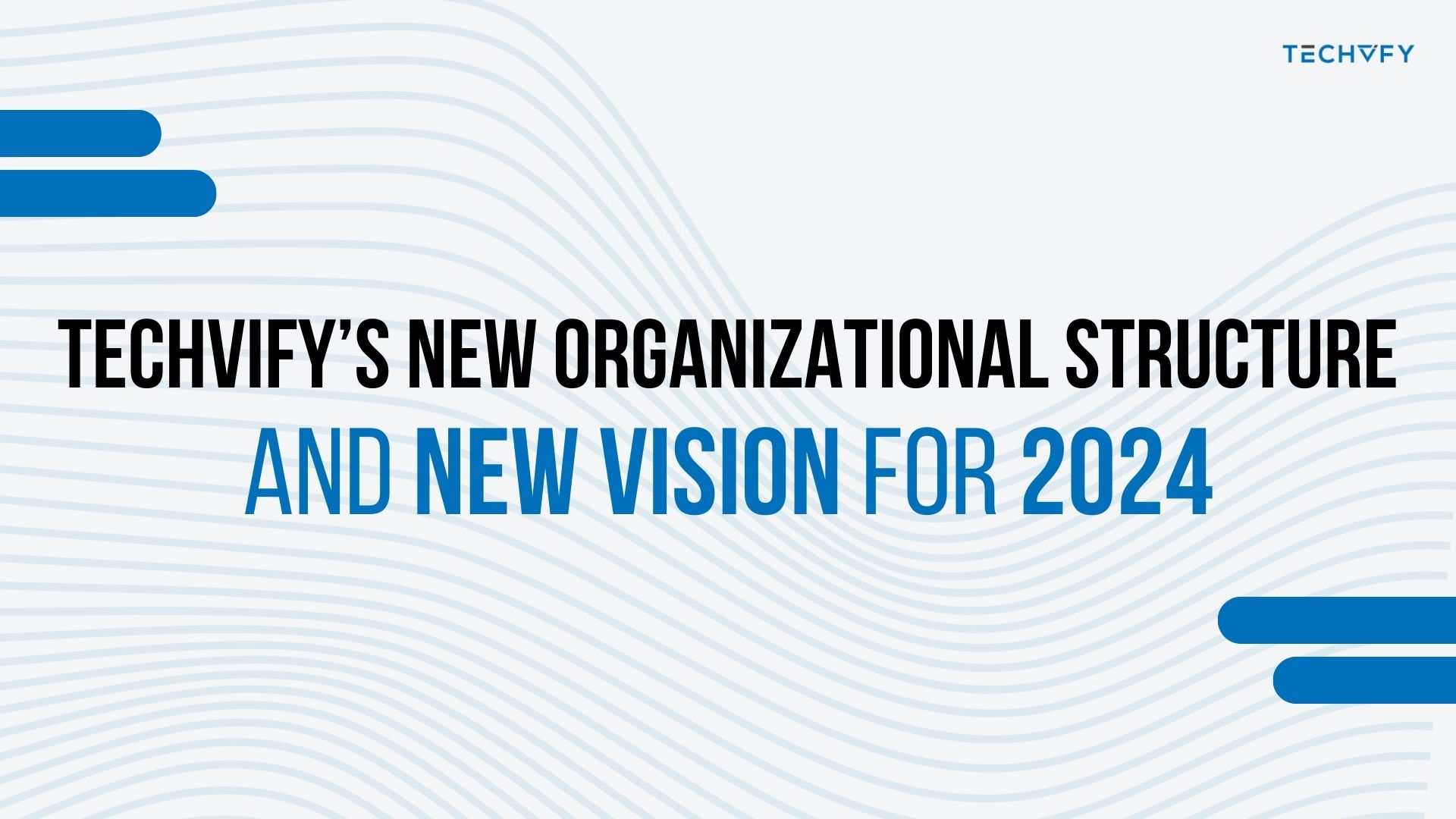The Difference between Eager Loading vs Lazy Loading
- David Ho
- 0 Comments
The comparison of Eager Loading vs Lazy Loading is a topic of significant importance. Understanding what Eager Loading and Lazy Loading are essential. In this article, we will break down what Eager Loading and Lazy Loading are, their benefits, and when to use each. This guide helps you make informed choices in your development projects, ensuring you leverage the right strategy.
I. Understanding Eager Loading vs Lazy Loading
1. Eager Loading
Definition
Eager Loading is a pre-emptive approach to data handling and resource management. In this strategy, an application loads the required data and resources during its initial load phase. This method is akin to a “bulk purchase,” where everything you might need is acquired in one go, regardless of whether you will use all of it immediately or not.

Benefits
- Consistency in User Experience: Since all resources are loaded initially, users experience no interruptions or delays when accessing different application parts.
- Reduced Server Requests: Eager loading minimizes the number of server requests after the initial load, which can be crucial for applications with limited server-side processing capabilities or scenarios with high network latency.
- Streamlined Development Process: Developers can avoid the complexities associated with dynamic resource loading, leading to a more straightforward development process.
2. Lazy Loading
Definition
Lazy Loading is a deferred loading approach. It strategically delays the loading of resources and data until they are required. This method is like shopping for groceries as and when you need them, rather than stocking up everything in one go.

Benefits
- Optimized Initial Performance: By initially loading only the bare minimum, the application can start faster, which is particularly beneficial for retaining users who might be deterred by long loading times.
- Resource Conservation: This approach is resource-efficient, as it reduces memory usage and conserves bandwidth, which is advantageous for users with restricted data plans or devices with less advanced specifications.
- Scalability: Lazy loading can contribute to the scalability of an application, as it allows for handling increasing amounts of data or users without a proportional increase in initial load times.
II. Key Differences Between Lazy Loading and Eager Loading
Understanding the difference between Lazy Loading and Eager Loading is key to optimizing performance and user experience in various applications. Here are the main distinctions:
| Aspect | Lazy Loading | Eager Loading |
|---|---|---|
| Resource Initialization Timing | Delays initialization until needed, loading resources like images or data only when accessed or a condition is met. | Initializes or loads resources as soon as code is executed or page is loaded, regardless of immediate need. |
| Impact on Performance | Reduces initial load times, ideal for speed and responsiveness, but may introduce delay when accessing resources for the first time. | Ensures immediate availability of resources, smoother post-load experience, but longer initial load times. |
| Bandwidth and Memory Usage | More efficient, loading only required resources, beneficial for mobile users or limited bandwidth. | Consumes more bandwidth and memory upfront by loading all resources, which is less efficient for limited resources. |
| Application Scenarios | Suited for applications with many features/content, ideal for mobile devices or varying network conditions. | Appropriate for smaller applications where all resources are essential from the start, like certain desktop applications. |
| Complexity and Maintenance | More complex logic for on-demand loading, increasing code maintenance complexity. | Simpler to implement, no additional loading logic, but may need optimization for initial resource load. |
| User Experience | Enhances experience by reducing initial load times, but may delay accessing features/content for the first time. | Consistent experience post-initial load, all features available, but longer initial load times may impact engagement. |
Check out our in-depth comparison and guide:
III. Eager Loading vs Lazy Loading, Which One to Choose?
1. When to Use Eager Loading
Eager Loading, the strategy of loading all necessary resources upfront, is particularly effective in certain scenarios:
- Small to Medium-Sized Data Sets
In applications where the data set is relatively small or medium-sized, Eager Loading is beneficial. This is because the overall size of the data is manageable and does not significantly impact the initial load time. The application can provide a smoother user experience without noticeable delays during operation by loading all resources at the start. - Enterprise Applications
For enterprise-level applications, where consistent performance and immediate availability of all features are critical, Eager Loading is often the preferred choice. In such environments, the initial load time is a less significant concern than the need for constant, uninterrupted access to all functionalities. This approach ensures that users have immediate access to the entire suite of features, essential in a professional setting where efficiency and reliability are paramount. - High-Speed Networks
Eager Loading is also advantageous when users operate on high-speed internet connections. In these cases, the capacity to handle larger initial loads is greater, minimizing the impact of loading all resources at once. Users on these networks are less likely to experience significant delays, making Eager Loading a viable option for providing a seamless experience right from the start.

2. When to Use Lazy Loading
Conversely, Lazy Loading, which involves loading resources on-demand, is more suitable in different scenarios:
- Content-Heavy Applications
Applications like media streaming services or large e-commerce platforms containing vast content benefit greatly from Lazy Loading. In these cases, loading all content immediately could be more practical and efficient, as users typically access only a fraction of the total content at any given time. Lazy Loading ensures that resources are conserved, and the application remains responsive, loading content only as needed. - Mobile Applications
Lazy Loading is often the best approach for mobile applications where device resources (such as battery life and processing power) and data usage are significant concerns. This method minimizes the app’s resource consumption, enhancing performance and user experience on mobile devices. It also reduces data usage, crucial for users with limited data plans or areas with slower internet connections. - User-Centric Applications
Lazy Loading is highly efficient in applications where different users have varying needs and access different sets of data or features. Instead of loading all features and data upfront, which can be wasteful and inefficient, Lazy Loading allows the application to tailor the loading process based on individual user interactions and needs. This approach improves performance and enhances the overall user experience by providing a customized interface and functionality.
Conclusion
Choosing between Eager Loading and Lazy Loading is crucial in shaping your application’s performance and user experience. Eager Loading offers immediate resource availability, ideal for smaller, predictable applications, while Lazy Loading enhances initial load times and efficiency, suitable for content-rich or mobile platforms.
Navigating these strategies can be challenging, but you don’t have to do it alone. TECHVIFY tailors these approaches to fit your needs, ensuring your application meets and exceeds user expectations. Contact TECHVIFY today for expert guidance and solutions.
TECHVIFY – Global AI & Software Solution Company
From Startups to Industry Leaders: TECHVIFY prioritizes results, not just deliverables. Accelerate your time to market and see ROI early with high-performing teams, AI (including GenAI) Software Solutions, and ODC (Offshore Development Center) services.
- Email: [email protected]
- Phone: (+84)24.77762.666





